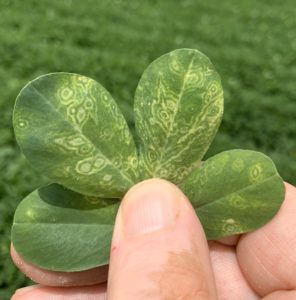Tifton, GA |
In Tifton recently, producers got an up close and personal look at the latest cotton and peanut research. It’s an event that’s an important one for producers as they get to see firsthand the important, grower funded work that’s being done that will keep the industry successful for years to come.
“We’re all in need of new information. Certainly in a trying times that we’ve got economically on the farm. We need to know the latest and the greatest, and of course, some of the stuff really won’t be available for commercial production for several years, but it’s good to have an idea of what our researchers are doing. The other side of it is it gives us a firsthand look at what our researchers are doing, the effort, the information and work that they’re putting in to get these improvements in our growing process and it just makes you feel good about how our research dollars are being spent,” says Joe Boddiford, Chairman of the Georgia Peanut Commission.
Of course, another important aspect of the event is getting to hear updates from experts on this year’s crop. This year was of course a rough one from the start as producers had a hard time even getting the crop planted, which according to UGA’s Scott Monfort, has now delayed most of this year’s peanut crop.
“Overall this year has progressed to be a pretty decent year. Every year, we have a lot of bumps and bruises to get to where we’re at today. We had a lot of rainfall in May that pushed our planting season back 2 to 3 weeks. So, a lot of our acres were planted last week of May going into June. Then we went from being extremely wet to extremely hot and dry in June. So, we fought some things to get this crop up and going,” says Extension Peanut Agronomist, Scott Montfort.
Since getting it up and going, producers have still had a challenging time, as the weather has caused a number of disease issues for peanut producers.
“Problem we face this year has been tomato spotted wilt virus. It will be a problem every single year, but growers need to look in their fields now. More spotted wilt than you want? What could you have done earlier to do it? Leaf spot diseases are always a problem for Georgia’s peanut farmers, always; but this year they’ve been a little bit slow to develop. I think that that warm, dry weather we had mid-season kind of was a restart button for this disease. Now growers are facing leaf spot diseases. They need to take an opportunity to manage them, but I think it’s been a little slow. The disease that’s been number one issue for us and certainly environmentally driven has been part of that has been white mold. White mold flourishes when we have warm, moist, humid nighttime temperatures. We’ve had that even when we’re not getting rain. If we have heat, if we have warm days, it can be,” says Bob Kemerait, Extension Plant Pathologist.
Monfort says that the rollercoaster of weather has continued to be a trend all throughout the growing season, as even now, dryland peanuts are suffering from the lack of rain. However, he says despite that, the crop could still turn out to be a decent one.
“The dryland crop is struggling. That’s around 49 percent of our crop is dryland. We had a lot more irrigated this time. And so that’s the one that I’m really concerned about as far as how is that going to fare out. I think it’s, it’s a good, maybe slightly above average crop,” says Monfort.
By: John Holcomb


